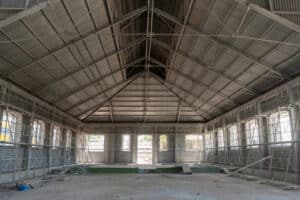Renovating a Historic Building for Commercial Use

Renovating a historic building for commercial use is an exciting yet challenging endeavor. These architectural treasures, often rich with character and history, offer unique opportunities to create memorable commercial spaces. However, their transformation requires careful planning, respect for heritage, and a balance between modern functionality and preservation of original features.
Understanding the Building’s History
The first step in renovating a historic building is to understand its history and significance. This involves researching the building’s original purpose, architectural style, and any notable events or figures associated with it. Engaging with local historical societies and archives can provide invaluable insights and ensure that the renovation respects the building’s legacy. This historical context not only informs design decisions but can also be a powerful marketing tool, allowing businesses to tell a compelling story about their space.
Regulatory Requirements
Historic buildings often fall under strict regulatory frameworks designed to protect their integrity. These regulations can vary significantly depending on the location and the building’s designation (e.g., listed, landmarked). Navigating these requirements requires expertise and patience. Working with conservation officers and adhering to guidelines from organizations like the National Park Service (in the U.S.) can help ensure compliance. These regulations may dictate specific materials, construction techniques, and even design elements to preserve the building’s historic character.
Balancing Modern Needs with Preservation
One of the main challenges in renovating historic buildings is integrating modern amenities while preserving original features. This involves upgrading electrical, plumbing, and HVAC systems to meet current standards without compromising the building’s structural and aesthetic integrity. Innovative solutions such as concealed wiring, climate control systems that respect the original design, and sensitive lighting can help achieve this balance. Retaining original elements like moldings, woodwork, and facades is crucial, as these features often define the building’s character.
Enhancing Accessibility and Sustainability
Incorporating accessibility features is essential to make the building usable for all, which can be particularly challenging in older structures. Thoughtful design can integrate ramps, elevators, and accessible restrooms without detracting from the building’s historic appeal. Additionally, sustainable practices should be a priority. This includes using eco-friendly materials, improving energy efficiency through better insulation and windows, and installing renewable energy sources where possible. These measures not only reduce the environmental impact but also attract eco-conscious businesses and customers.
Choosing the Right Partner in Central Maryland
The success of a historic building renovation project heavily depends on choosing the right construction partner. Irvine Construction stands out as an exemplary choice for such endeavors. With extensive experience in preserving and revitalizing historic structures, Irvine Construction combines technical expertise with a deep appreciation for architectural heritage. Our commitment to quality, attention to detail, and collaborative approach ensure that every project not only meets modern standards but also honors the building’s past. For commercial renovation projects involving historic buildings, Irvine Construction offers the perfect blend of innovation and tradition, making us the ideal partner for transforming historic spaces into thriving commercial hubs.